With VW Power and Classic Lines, This Streamliner Will Chase 200 MPH
Growing up in the high Desert Southwest, Chris Mursick learned the appeal of a simple, air-cooled Volkswagen engine. With fewer parts to fail and simple construction, VW’s air-cooled flat-four has served in all sorts of roles. For Mursick, it proved to be an ideal powerplant for building the desert-racing buggies he raced in the Baja 500 and Baja 1000, and it made him a fan of Volkswagen cars in general.
Mursick’s best friend and off-road race co-driver encouraged him to compete in Speed Week, and Salt Fever struck him hard. Soon he was building a hot rod, which he got ready to run just in time for the event to rain out. The next year he returned with a belly tank lakester and tried for a 246-mph record, but fell 6 mph short. His most fruitful land speed racing endeavor so far has been a flat-four–powered Karmann Ghia he campaigned to 14 class records and also put several drives into the “1 Club,” topping 100 mph using an 1100-cc VW flat-four originally rated at 36 hp.
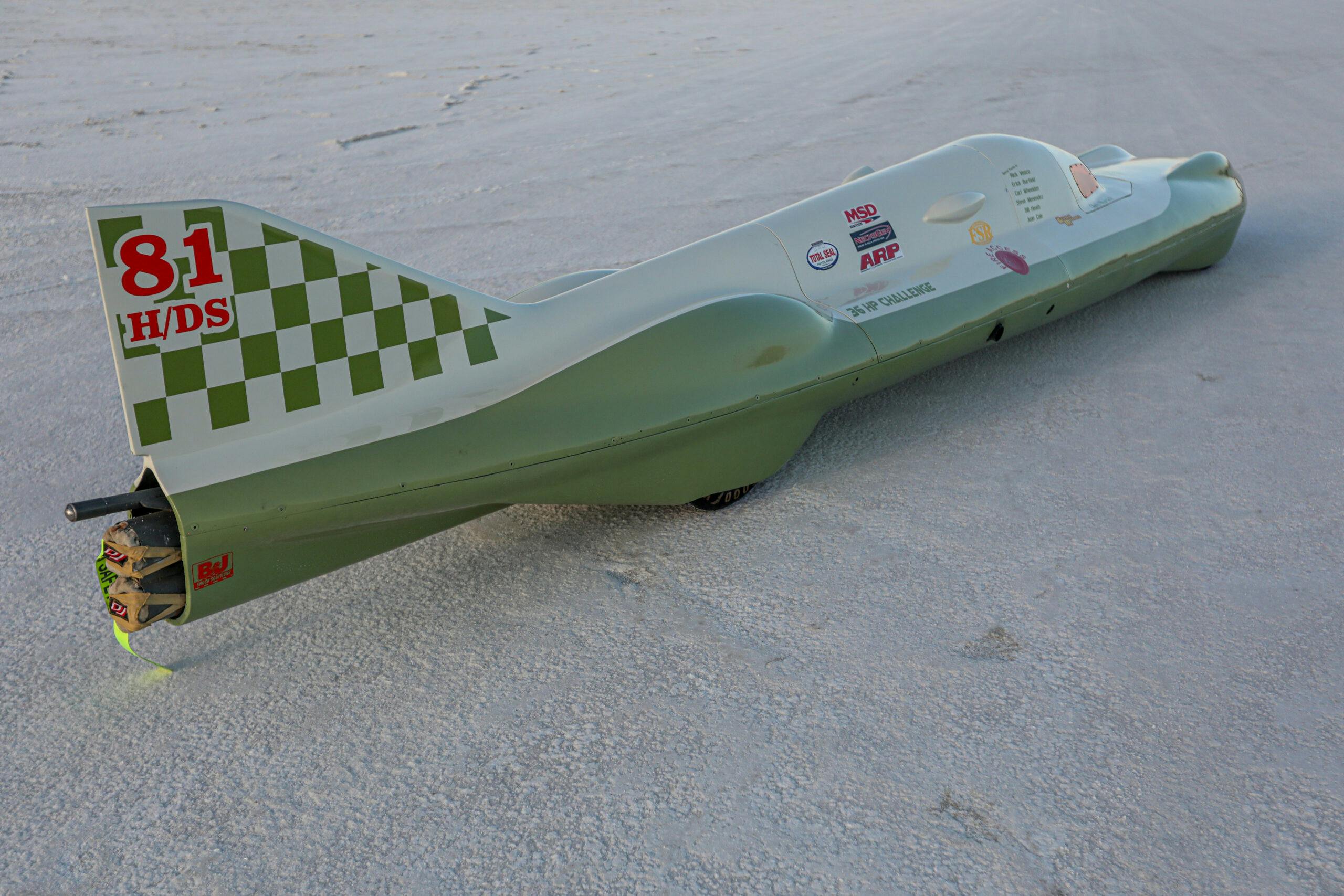
Now living in the Pacific Northwest, Mursick is still charging after Bonneville records, but when we found him at Speed Week 2024, he was driving his fiberglass-bodied streamliner. If you’re familiar with land speed racing, you may recognize the shape of this sleek machine. It was built from the same mold as one of the salt’s most storied streamliners.
At Speed Week 2020, Mursick was running the Karmann Ghia after returning from racing it in Australia. Team Vesco’s Duramax-powered push truck was having issues getting started, and word made it to the team that Mursick knew his way around the V-8 turbodiesel. Rick Vesco left him a note asking for help. The following day, Mursick stopped by the ailing diesel and made a quick diagnosis. “I fixed the truck with a 10-cent O-ring,” said Mursick.
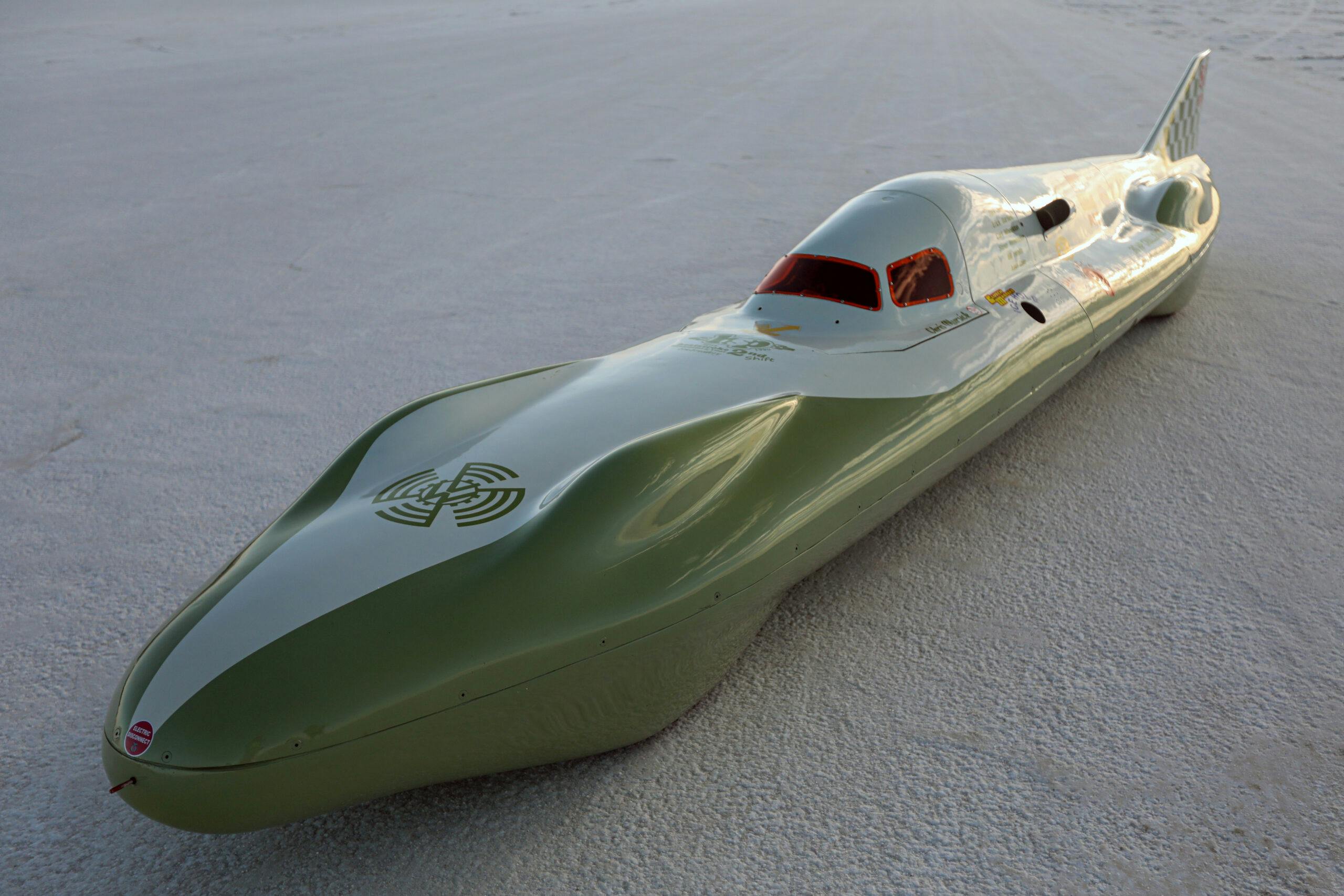
Mursick immediately began daydreaming about his next land-speed car. He saw Vesco in the staging lanes and got into the push truck with him to share his plan. He had hoped to borrow the fiberglass molds of the Little Giant, Vesco’s compact streamliner that first entered service in 1957, to make a VW-powered streamliner of his own. Vesco was on board with loaning the molds out, but he had just sent them to another racer who planned on using them to build a car. Mursick came up with a compromise. “I’ll make his body if you let me use the molds,” Mursick offered. It was a deal. Days later he picked up the molds and soon began laying up fiberglass. In just five months he had built two bodies, handed one off, and turned his own into a functioning race car. “Vesco totally supported me,” Mursick said, listing the parts that had helped make his streamliner dream a reality, which included wheels that were formerly used on the Turbinator streamliner, and a set of parachutes.
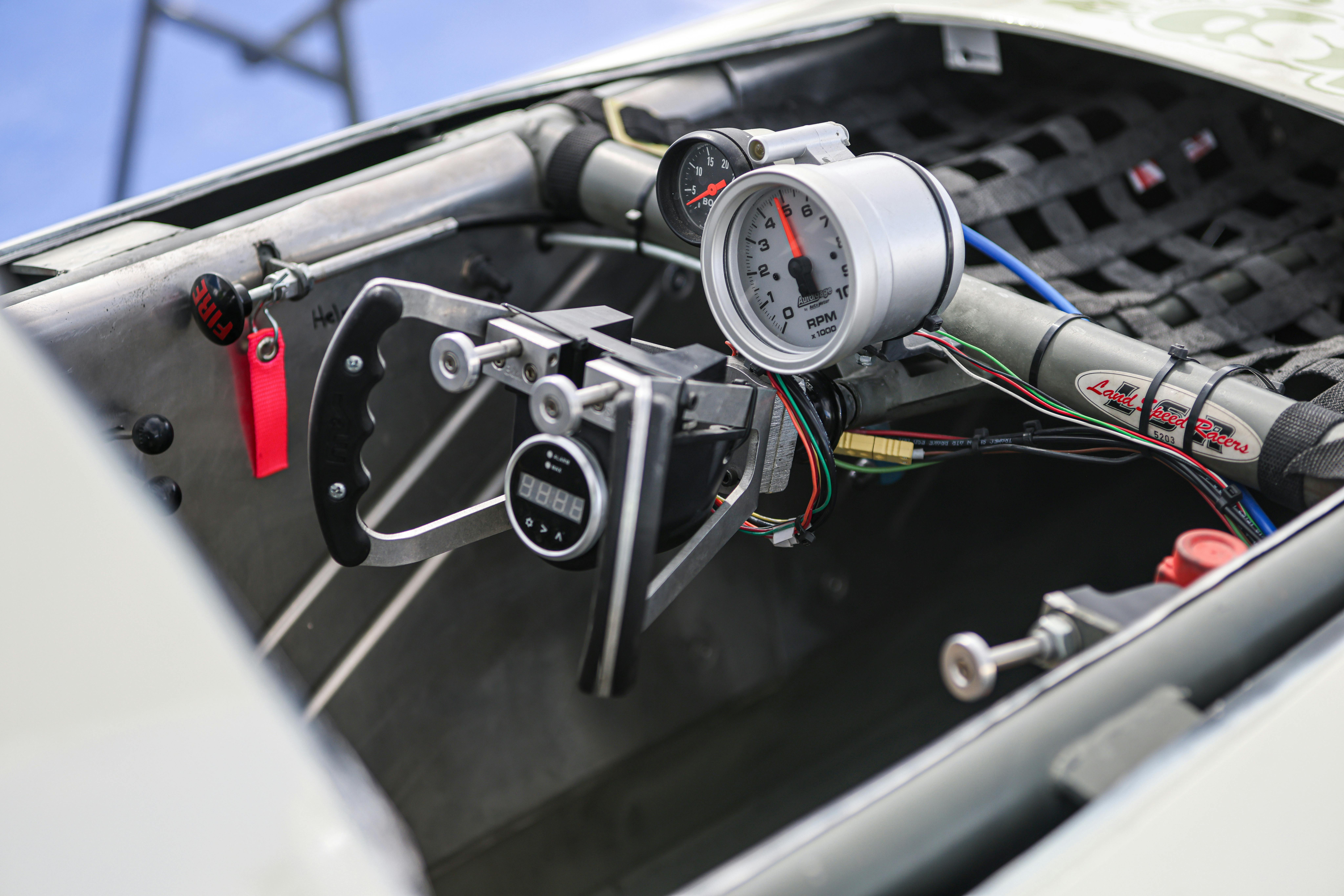
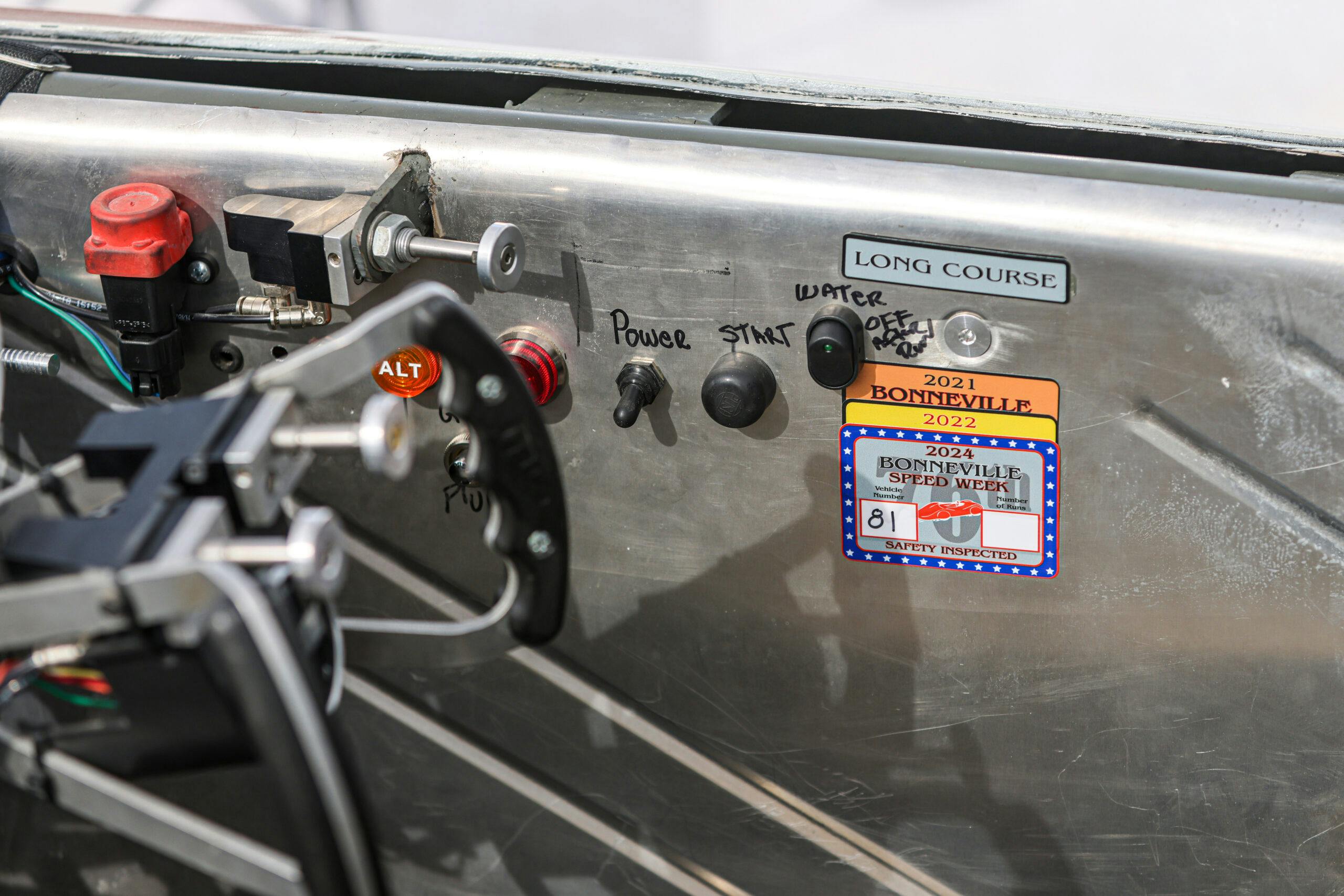
This year marked the first time the car was powered by a diesel engine, a 1.5-liter pulled from a 1981 VW Rabbit pickup. At the time it was produced, the naturally aspirated diesel was one of the most fuel-efficient engines on sale in the United States, but it made less than 50 hp. Even with a streamliner body, that wouldn’t cut it. Collin Gyenes at Techtonics Tuning ported the cylinder head and sorted out the valvetrain. Mursick assembled the longblock and plumbed up an upgraded T6 turbocharger and a charge cooler. It seems like the real magic came from Dieselmeken, the Swedish company that built the injectors and injector pump for the tiny VW engines. That’s the biggest factor in getting the engine to rev to 6500rpm. The result is about 225 hp, a solid output for such a small engine and more than enough to push the aerodynamic car into the record books. That’s certainly the plan.
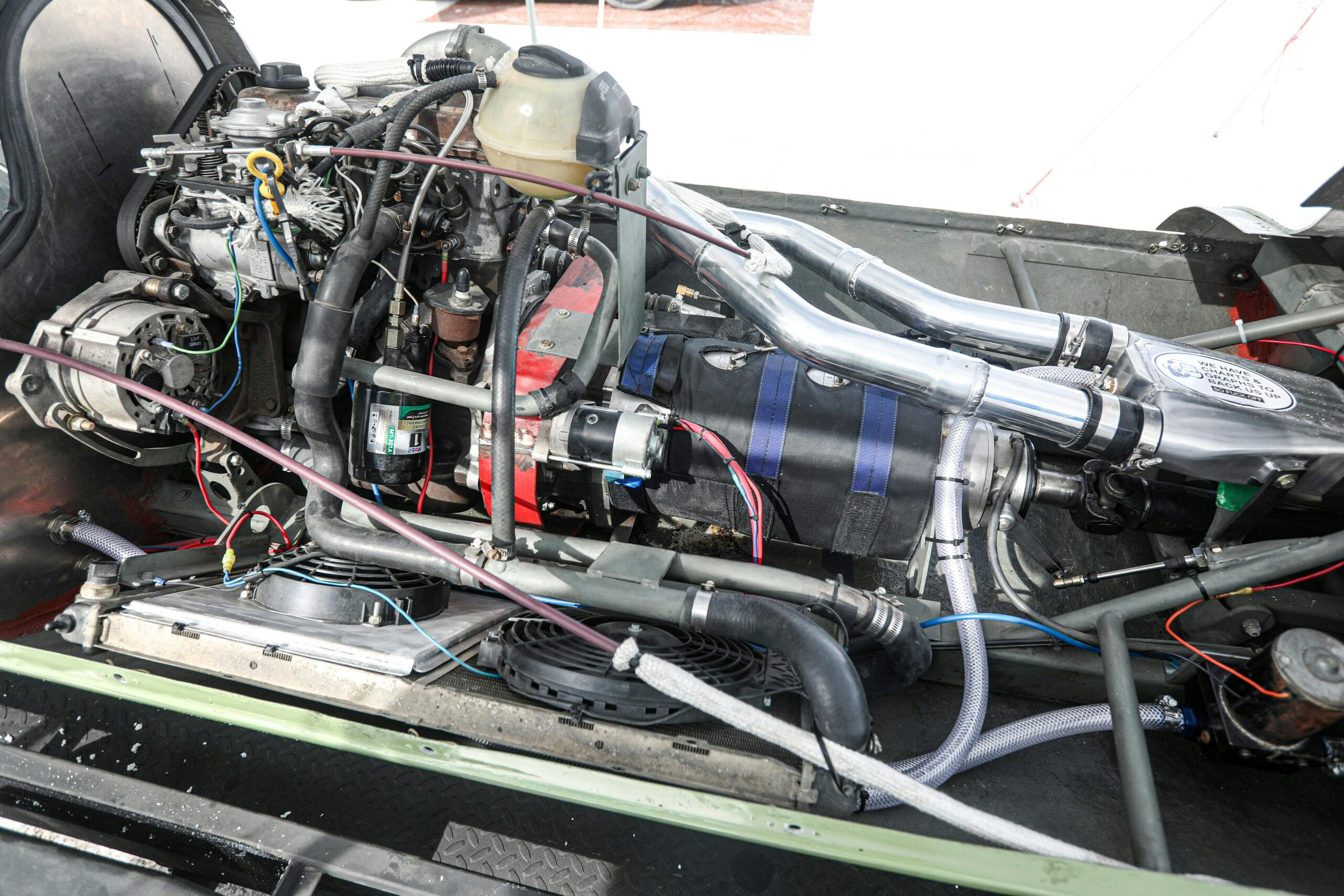
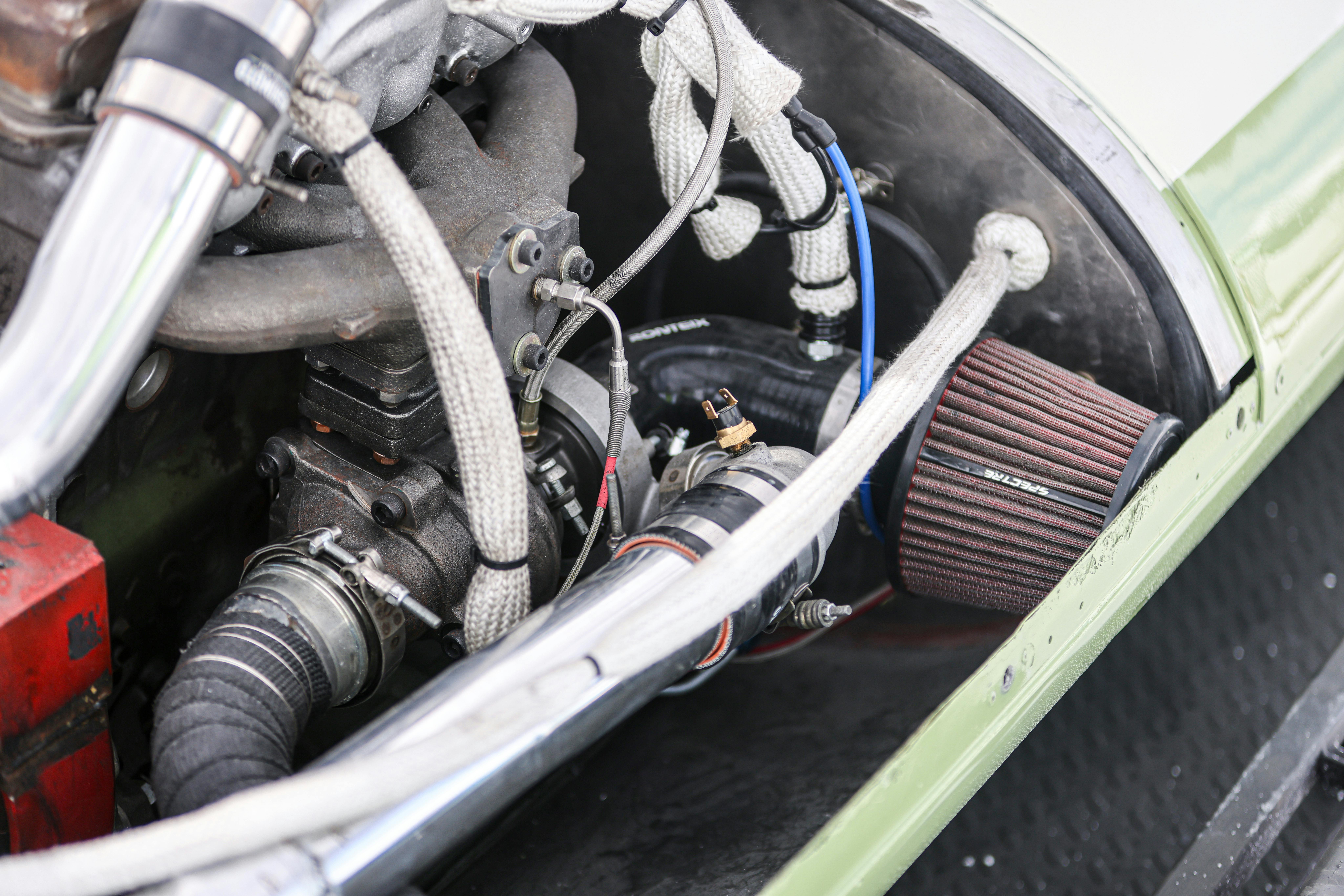
The streamliner proved to be fast enough to qualify for the record, but Mursick was hoping for more. After a pass well in excess of the current record, he and his team discovered the oil feed line to the turbo was broken. The steel braided line, which was supposed to be brand new, was disintegrating. They fixed that issue and headed out again. The car reached 168 mph, but Mursick knew something was off. “It still wasn’t pulling like it should,” he said. It turned out that the boost pressure, which was supposed to be 30 psi, had only hit 18 psi. They continued to shake the car down and had one minor scare. “I heard a pop, so I turned out,” said Mursick describing another run. What sounded bad was a simple mistake of overfilled coolant. When the system got a bit hot it burped. Some coolant spilled, but that was the extent of the damage. The team qualified for the H/Diesel Streamliner class record, which was set in 2009 at 123.605 mph, but by that point it was late in the week and they hadn’t yet had a trouble-free run. Tired and worn out, they put the car on the trailer and decided to focus on helping the SCTA wrap up Speed Week. It was a good thing, too. Upon returning home, Mursick tore the cooling system apart and found that the thermostat was sticking shut. “If I’d made another run, I probably would have melted the engine,” he said.
The car is making good progress and is being built back stronger than ever in anticipation of Speed Week 2025. An Aussie Desert Coolers radiator will anchor the new cooling system, for one thing, so the temps should be kept in check. “Now, I’m just trying to get into the 2 Club,” said Mursick. While that’s the current goal, there’s a lot more in store for the streamliner. Besides the 1.5-liter diesel, Mursick is also building a 2.0-liter VW diesel in hopes of breaking the current G/DS class record of 210.782 mph. He’s also planning a turbocharged version of the 1100-cc flat-four for another run at the 36-hp Challenge to top 100 mph, as well as a wild flat-eight based on twin 2180-cc air-cooled VW flat-fours that will be shooting for a 300-mph record. You never know what you’re going to find at Speed Week, which is why we’ll be back next year hoping to see a new entrant into the 2 Club.

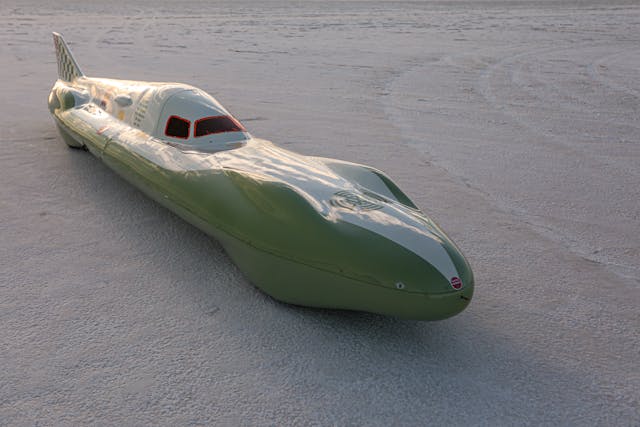





As my first car was a 63 VW Beetle and I now drive a TDI VW, I’m certainly pulling for this fellow. Beautiful Streamliner and amazing skill and talent. Thanks for the article.
It is a very beautiful shape and a nice color combo. Wishing them success!